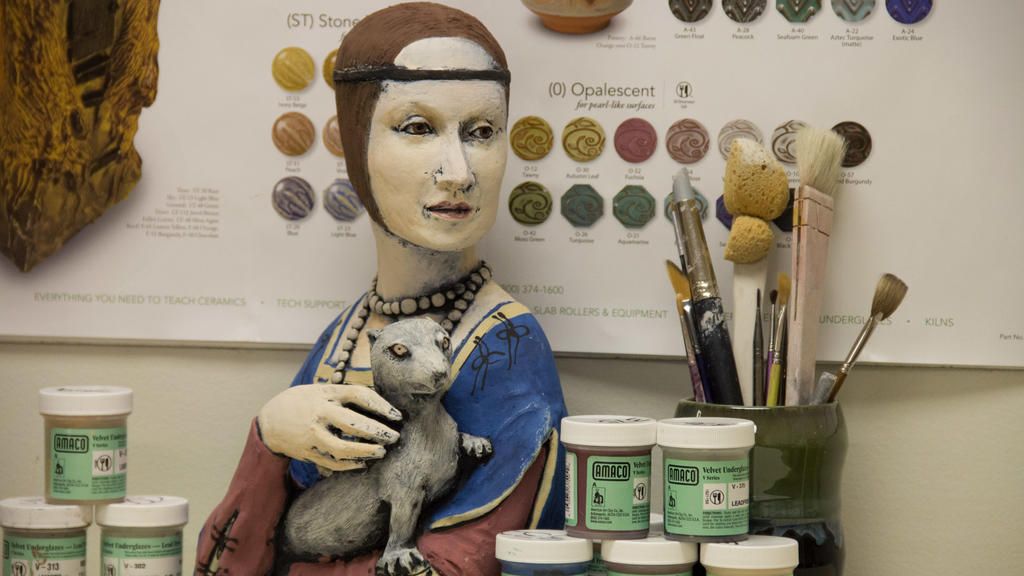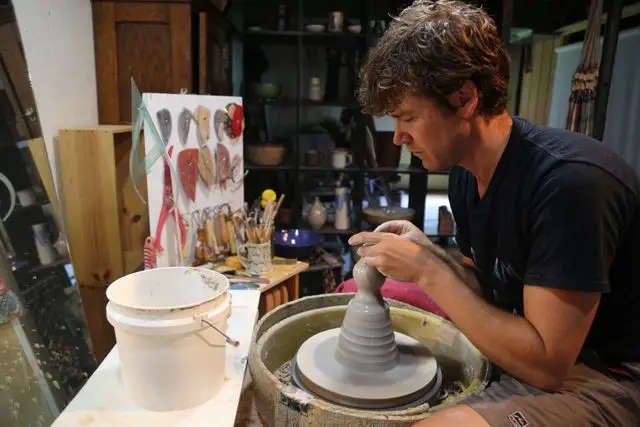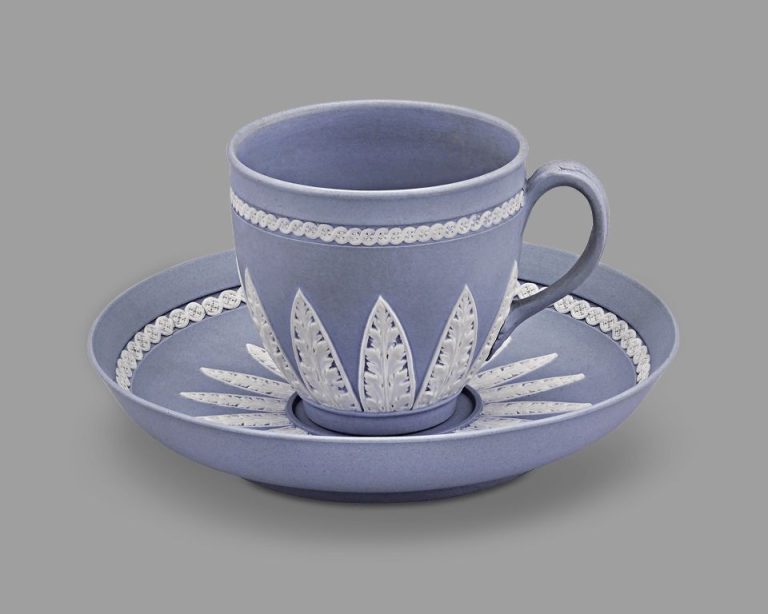Inspiring Clay Art Projects For Artists Of All Levels
Clay is a versatile, creative medium that allows artists of all ages and skill levels to express themselves. Working with clay provides a tactile, hands-on experience and unleashes the imagination. Sculpting, molding, and shaping clay into three-dimensional forms is both calming and inspiring. The process of bringing an idea to life out of a simple lump of clay is immensely satisfying.
Clay art has many benefits beyond the joy of creation. The physical nature of working with clay makes it an ideal medium for young children. Molding clay improves hand-eye coordination and fine motor skills. The forgiving texture of clay boosts confidence and self-expression. Clay stimulates imagination and introduces basic sculptural techniques. Both children and adults will find the medium to be flexible, fun, and full of possibilities.
This guide will explore inspiring clay projects for artists of all levels. With the proper clay, tools, and techniques, beginners can start creating right away. Step-by-step instructions will teach fundamental sculpting methods as well as more advanced skills. Tips for painting, glazing, and displaying finished clay art will help take your creations to the next level. The versatility of clay makes it an artistic material anyone can enjoy.
Best Clay Types for Beginners
When starting out with clay art, choosing the right type of clay is important. The main options for beginner clays are air-dry clay, polymer clay, and modeling clay. Each has pros and cons that are worth considering.
Air-dry clay is a water-based clay that dries naturally at room temperature. Brands like Crayola Model Magic are easy to find and inexpensive. Air-dry clays are lightweight and easy to shape. Drawbacks are that pieces may crack or be fragile when dry. Refer to this source for more on air-dry clay characteristics.
Polymer clay contains plasticizers that cure when baked at low temperatures. Sculpey and Fimo are popular brands. A benefit of polymer clay is that it doesn’t dry out when exposed to air. It also produces strong, durable pieces. However, conditioning polymer clay is required to make it pliable for sculpting.
Modeling clay is an oil-based clay that never dries out. It is reusable and provides flexibility for sculpting. It won’t produce permanent pieces, but is great for practicing clay techniques. Clean up can be messy compared to other clays. Modeling clay is inexpensive and readily available.
Weighing the sculpting qualities, cost, and project needs can help identify the best clay type to start with. Beginners may want to try a few options to discover their preferred clay medium.
Basic Clay Sculpting Tools
Clay sculpting requires a few basic tools to shape, carve, smooth, and cut the clay. While advanced artists use specialized instruments, beginners can start with just 5-6 essential tools:
Wire tools like clay loop tools and ribbon tools are great for smoothing clay and adding details. As Pottery with a Purpose explains, ribbon tools can be used for carving lines and patterns into clay. Loop tools are helpful for blending and smoothing small areas.
Sculpting sticks and knives are useful for cutting, slicing, and refining shapes in clay. These rigid tools provide control and precision. Clay cutters like Dotting Tools on Amazon also cut shapes like circles and curves.
Basic pottery tools like sponges, paint brushes, and toothpicks have many uses for shaping and texturing clay. Almost any household item can be used! The key is experimenting with different implements to achieve unique effects.
Start with a basic 5-piece clay tool set and add specialty tools over time for more advanced techniques. The essential starter tools allow beginners to grasp, smooth, blend, carve, and refine clay into endless creative forms.
Fun and Easy Clay Projects for Kids
Kids can have a blast creating fun clay projects that allow them to express their creativity. Here are some easy clay crafts that are perfect for children.
Coil Pots
One of the most basic clay projects for kids is making coil pots. To make a coil pot, simply roll clay into long coil or snake shapes. Then, coil pieces on top of each other, gradually making a circle shape. Smooth the coils together and you’ll have a basic pot shape. Let the kids decorate their pots with beads, feathers, or paint.
Pinch Pots
Pinch pots are another fundamental clay project for kids. Take a ball of clay and pinch around the edges to shape it into a basic pot form. Pinch pots can be left smooth or decorated. Let the clay fully dry before using pinch pots to hold small items.
Clay Magnets
Making clay magnets is an easy way for kids to create functional art. Roll balls or cut shapes out of clay, then use scissors to make a slit in each piece. Let the clay fully dry. Glue a magnet into the slit on each piece. Kids can make clay magnets in different shapes like animals or geometric designs.
Clay Animals
Sculpting clay animals engages a child’s imagination and creativity. Make basic shapes like balls or eggs, then use tools to add details like eyes, ears, tails or wings to transform the clay into animals. Let the kids create their favorite real or imaginary creatures.
Source: https://artfulparent.com/15-amazing-crayola-air-dry-clay-art-projects-for-kids/
Intermediate Clay Projects
For artists looking to expand their skills beyond basic clay modeling and sculpture, there are plenty of stimulating intermediate projects to try. Focusing on more intricate techniques like carving and joining clay parts opens up more possibilities for creative expression. Here are some suggested intermediate clay projects to hone your skills.
Relief tiles and plaques allow you to practice carving designs and patterns into clay slabs. This guide from Ceramic Arts Network details the process of making relief tiles using both press molds and freehand carving. Geometric patterns, landscapes, animals and more can be sculpted in this bas-relief medium.
Sculpting intricate human and animal figurines develops your attention to detail and anatomy. The Ceramic Arts Network article Figurative Ceramic Sculpture recommends starting simple with a small ornament before tackling more ambitious figures. Hollow pieces require expert hole piercing and joining of parts.
Creating ceramic jewelry like pendants, beads and rings provides a creative outlet on a miniature scale. The Spruce Crafts tutorial How to Make Polymer Clay Jewelry covers essential steps like conditioning the clay, using cutters and molds, applying liquid polymer clay and finishing techniques.
Decorative boxes allow intermediate clayers to practice lid making, attaching parts and adding ornamental elements like feet or handles. Cleverly crafted boxes also make great gifts. This project from Ceramic Arts Network walks through how to make a lidded ceramic trinket box complete with a faux knob.
Advanced Clay Sculpting Techniques
There are various advanced techniques that clay sculptors use to create more intricate and realistic pieces of art. Here are some key techniques to be aware of:
Armatures

An armature provides an internal framework or support structure for a clay sculpture. It is often made from wire, wood, metal, cardboard or other materials. Armatures allow sculptors to create pieces with extended arms, legs or other unsupported parts without the risk of them warping or breaking off when the clay is being worked on or dries. They provide stability and also save on clay usage. To create an armature, begin by sketching the desired pose and proportions. Then create the framework using sturdy materials like thick wire. Secure the joints with tape or glue before carefully applying clay over the form (Clay Sculpture Techniques and Tips).
Adding Texture
Textures make a clay sculpture come alive with visual interest. Roll out slabs of clay and use textured materials like lace, burlap, netting or textured rollers to imprint patterns. Use sculpting tools, knives, forks and combs to scratch, carve, incise or pierce the surface to achieve effects like scales, fur, bark or fabric weaves. Attach bits of dried clay, rocks, twigs or other materials for added 3D textures. Press molds of actual textures into the clay. Draw freehand textures using clay shapers or sculpting tools (8 Must-Know clay modeling techniques).
Mixing Media
Incorporating mixed media adds richness and realism to clay sculpture. Try inserting wires, nails, metal mesh, beads, stones, shells, leather, feathers or other materials while the clay is still soft. Use acrylic paints, oil pastels and other color mediums to enhance details after baking. Add glossy resin layers over baked polymer clay to simulate effects like water or glass. Affix recycled items, found objects or repurposed materials to finished pieces for assemblage-style sculptures.
Achieving Realism
Pay close attention to anatomy and proportions when sculpting realistic human or animal figures. Use reference photos of models in similar poses. Focus on musculature, skeletal structure, fat distribution and the way gravity impacts different body parts. Add very subtle detailing like wrinkles, veins, and skin irregularities. Use metal clay tools to refine details and textures. Study the effects of light on form. Pay special attention when sculpting eyes, hands, feet and other intricately shaped features. Work slowly and methodically to capture realistic shapes, contours, and fine details.
Tips for Clay Painting and Glazing
When painting and glazing clay artwork, there are some key tips to keep in mind. Acrylic paints behave differently than traditional pottery glazes. Acrylics sit on top of the clay surface, while glazes soak into the clay. For custom color mixing, make sure to use compatible glazes that have similar melting temperatures.
When applying glazes, use a soft brush and avoid over-brushing to prevent crawling. Apply glazes in thin, even layers. Allow proper drying time between layers. Use wax resist or liquid latex to mask off areas where you don’t want glaze.
Glazing the bottoms of pieces is not recommended, as glaze can fuse clay to kiln shelves. Always leave the very bottom unglazed. For multi-layered glazing, start cautiously and test compatibility on a bisque tile first. Refer to manufacturer instructions for firing temperatures and any special glaze application tips.
Some helpful online resources for clay painting and glazing techniques include:
https://potterycrafters.com/glazing-pottery-27-glazing-tips-for-beginners/
https://www.reddit.com/r/Pottery/comments/161vcku/what_glazing_tips_do_you_wish_you_were_told_as_a/
Inspiring Clay Artists to Follow
There are many talented clay artists creating inspiring works of art today. Here are profiles of some of the top clay artists and highlights of their unique styles and creations:
Shio Kusaka
Japanese ceramic artist Shio Kusaka creates delicate porcelain vessels and sculptures. Her pieces feature thin, flowing shapes and subtle earthy colors. She builds up the porcelain in layers to create flowing, organic forms. Her minimalist pieces encourage close looking and highlight the beauty in simple forms.
Roberto Lugo
Roberto Lugo is a ceramic artist and social activist who uses porcelain to highlight social justice issues and celebrate underrepresented groups. His porcelain vases combine Chinese imagery, hip hop culture, and his own Puerto Rican heritage. He also creates pieces inspired by the Black Lives Matter movement.
Arlene Shechet
Sculptor Arlene Shechet creates ceramic sculptures from porcelain, wood, and mixed media. She expertly manipulates clay into dynamic forms, often playing with gravity by cantilevering pieces or suspending them from walls and ceilings. Her innovative clay sculptures reimagine the possibilities of ceramics.
Displaying and Selling Clay Artwork
Whether you create clay artwork as a hobby or business, sharing and selling your unique pieces with others can be incredibly rewarding. Here are some tips for beautifully photographing, marketing, and selling your clay creations online and in galleries:
Photograph pieces in natural lighting against a clean, neutral backdrop. Use a quality camera and capture multiple angles and close-ups. Edit photos to adjust brightness, contrast, and saturation for an appealing, professional look. Include a size reference like a ruler.
Create an online shop through platforms like Etsy, ArtFire, or your own website store. Write compelling product descriptions highlighting unique details and backstories. Optimize photos and listings for search engine discovery. Promote new works through social media, email newsletters, and collaborations with other artists.
Research local art galleries or craft fairs accepting artist submissions. Connect with owners and curators through emails, portfolios, and in-person meetings. Attend gallery openings and events to network and gain exposure. Consider consigning pieces or renting booth space to sell works.
Price pieces based on size, complexity, materials, your skill level, and local market rates. Calculate adequate profit margins. Offer a variety of price points. Build perception of value through professional branding and presentation. Provide exceptional customer service when fulfilling orders and inquiries.
Consider creative ways to display clay works like wall mounts, glass domes, rotating stands, and customized shelves. Experiment with unique shapes, series, collaborations, and themed collections to stand out. Maintain a consistent portfolio showcasing your signature style and artistic strengths.
With these tips, you can feel confident sharing your clay art with a wider audience. Proper presentation and marketing of your creations can lead to fruitful opportunities to sell and exhibit your ceramic art. Most importantly, stay passionate about the art making process itself.
Conclusion
Clay is such a versatile and enjoyable artistic medium for creatives of all levels. We covered the basics, from the best clay types and sculpting tools to begin with, to simple projects for kids as well as more advanced techniques. Sculpting with clay is a wonderful way to express your creativity, relax, and have fun crafting unique pieces of art.
Clay art allows you to bring imaginative ideas and designs to life. It’s extremely forgiving – if you make a mistake, you can simply rework the clay. Completed sculptures can be decorated with painting, glazing, or left natural. The possibilities are endless!
Hopefully this guide provided inspiring clay art projects, tips, and motivation to start molding and creating. Don’t be afraid to experiment and find your own artistic style. With practice, you’ll be amazed at what you can make. Clay art is an enjoyable, meditative process. Immerse yourself in the textures, feel the clay take shape in your hands, and see where your imagination takes you.


